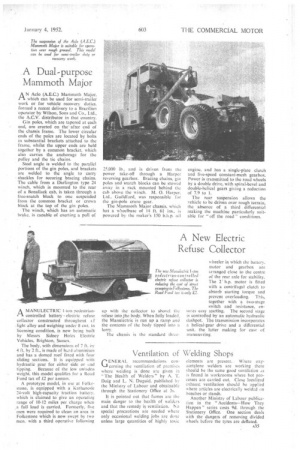A Dual-purpose Mammoth Major
Page 53

If you've noticed an error in this article please click here to report it so we can fix it.
AN Ac (A.E.C.) Mammoth Major, which can be used for semi-trailer work or for vehicle recovery duties, formed a recent delivery to a Brazilian operator by Wilson, Sons and Co., Ltd., the A.C.V. distributor in that country.
Gin poles, which are tapered at each end, are erected on the after end of the chassis frame. The lower circular ends of the poles are located by bolts in substantial brackets attached to the frame, whilst the upper ends are held together by a common bracket, which also carries the anchorage for the pulley and the tie chains.
Steel angle is welded to the parallel portions of the gin poles, and brackets are welded tothe angle to carry shackles for securing bracing chains. The cable from a Darlington type 24 winch, which is mounted to the rear of a Ronallack cab, is 'taken through a free-snatch block to one suspended from the common bracket or crown block at the top of the gin poles.
The winch, which has an automatic brake, is capable of exerting a pull of
25,000 lb., and is driven from the power take-off through a Harper reversing gearbox. Bracing chains, gin poles and snatch blocks can be stowed away in a reek mounted behind the cab above the winch. M. O. Harper, Ltd.. Guildford, was responsible For the gin-pole crane gear.
The Mammoth Major chassis, which has a wheelbase of 14 ft_ 61 ins„ is powered by the maker's 150 b.h.p. oil engine, and has a single-plate clutch and five-speed constant-mesh gearbox. Power is transmitted to the road wheels by a double drive, with spiral-bevel and double-helical gears giving a reduction of 7.9 to 1.
The rear suspension allows the vehicle to be driven over rough terrain, the absence of a third differential making the machine particularly suitable for "off the road" conditions.




















































































